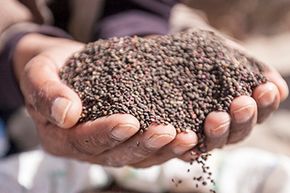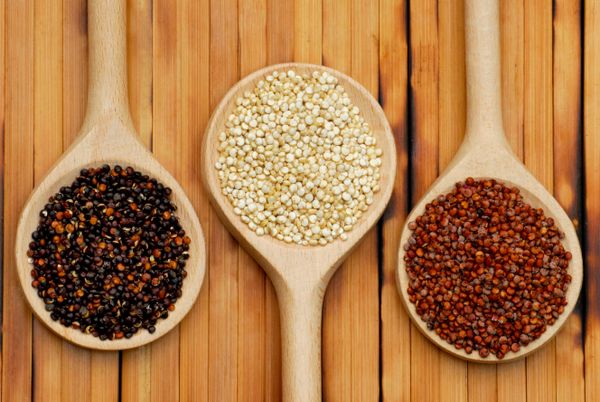You may not be used to seeing the word "ancient" associated with anything intended to be eaten. But ancient grains are nothing to run from; increasingly more people are flocking toward their unique flavor and nutritional punch. Often referred to as super grains or heritage grains, they can be eaten as breakfast cereals, used for baking, or even simply toasted or tossed on a salad [source: Jolly].
Unlike modern grains, which have both evolved and been cultivated over time to increase farming yield and improve product shelf life, ancient grains are still planted and harvested in the same manner they were several thousands of years ago. Many ancient grains are physically too small to be refined – a process that separates the outer bran from the inner germ. As a result, ancient grains retain more of their original health benefits: vitamins, minerals, fiber, protein and antioxidants [source: NPR].
Advertisement
Additionally, many ancient grains are naturally gluten-free, appealing to the increasing number of people who follow a gluten-free diet.
The U.S. Department of Agriculture (USDA) suggests that at least half of all grains eaten by Americans daily should be in whole-grain form. Sampling some ancient grains can be a tasty way to meet this recommendation [source: U.S. Department of Agriculture].
While there is no strictly defined list of what grains count as "ancient," we've listed some popular choices.
- Amaranth: Originally a staple crop of the Aztecs and Incas, amaranth is a tiny grain that resembles couscous. Rich in calcium, it delivers a mix of essential amino acids and is considered more of a complete protein than many grains.
- Chia: While you may associate it with the kitschy Chia Pet, this ancient grain is actually a seed and originated in Mexico and Guatemala. Chia contains many natural antioxidants and is rich in minerals, fiber and the omega-3 fatty acid ALA.
- Farro: Legend ties this relative of modern wheat to the Roman legions. It's popular in Italy, where it is used in soups and risotto, and made into pasta. Be sure the label says "whole farro," otherwise, the bran has been removed.
- Teff: Traced back to origins in Ethiopia more than 2,500 years ago, teff is a grain the size of poppy seeds. It ranges in color from white to red to dark brown, and has a sweet taste.
- Quinoa: Already popular among vegetarians, quinoa was considered sacred by the Incas, who revered it as the mother of all grains. With more than 120 varieties in existence, protein-rich quinoa has a nutty flavor and is actually a seed, not a grain.
- Khorasan: High in protein, minerals and lipids, products made with ancient Khorasan wheat are associated with reductions in total cholesterol and blood sugar, and can lower levels of cytokines, which trigger inflammation. The only Khorasan wheat currently cultivated is sold under the brand name Kamut.
- Millet: You might be more familiar with using millet in your bird feeders rather than your own diet. But it's commonly consumed in India, China, South America, Russia and the Himalayas, where it's toasted or mixed with other grains.
- Spelt: Interchangeable with wheat in any application, spelt has a sweet, nutty flavor and 17 percent more protein than common wheat [source: Food Navigator]. It's also a good source of carbohydrates, niacin and iron.
- Wheat Berries: Wheat berries are whole kernels of the wheat plant with only the inedible husk removed. With a nutty flavor, wheat berries are more nutrient-rich than whole-wheat flour [sources: Food Navigator, Jolly].
If you're looking for ways to add more nutrients to your diet, try sampling some of the staples that our ancestors enjoyed.
Advertisement


